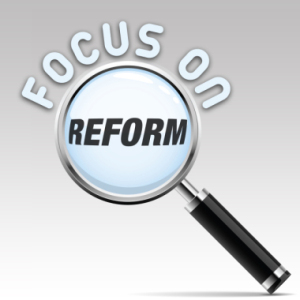by
Astrid Fiano, DOTmed News Writer | July 08, 2010

DOTmed zooms in
on key reform
issues.
Many provisions of the Affordable Care Act take effect this year and next year, leaving the health care consumer with a dizzying array of new programs, benefits, and questions about what applies to whom. As DOTmed coverage of the provisions in the act continues, the following is an update on what provisions have taken or are taking effect soon, and who is eligible for the programs in those provisions.
For Seniors:
Those on Medicare will begin receiving rebates to help cover the Medicare part D prescription drug
doughnut hole, starting with a $250 rebate check this year and increasing in years to come. The doughnut hole has been a continuing difficulty for Medicare beneficiaries since it went into effect in 2006. Once a beneficiary meets a certain threshold he or she must pay the full cost of drugs out of pocket until reaching the catastrophic coverage threshold. The doughnut hole provision in the Affordable Care Act aims to eliminate the gap by the year 2020.
The CLASS Independent Benefit plan will allow purchase of community living assistance services and supports for those with functional limitations. This program will take place in 2011. Employers are allowed to have means for employees to enroll automatically. Processes for those who are self-employed or whose employers do not participate will be developed. The program enrollment is voluntary, and premiums will be deducted from wages or self-employment income.
Eligibility depends upon a person's physical limitations: after premiums have been paid for 60 months, the benefits are triggered by an inability to perform two activities of daily living for at least 90 days. Activities of daily living include eating, toileting, transferring, bathing and dressing.
For Employers:
The Small Business Tax Credits measure is already effective. Both small for-profit businesses and small not-for-profit organizations are eligible for the credit. For regular businesses, the credit can be up to 35 percent of a small business' premium costs in 2010. On January 1, 2014, the rate increases to 50 percent; a business can claim the credit for 2010 through 2013 and for any two years after 2013. Non-profits will be eligible for a 25 percent tax credit in 2010, which increases to 35 percent in 2014.
The businesses who qualify must have fewer than the equivalent of 25 full-time workers (such as a business with fewer than 50 part-time workers), pay average annual wages lower than $50,000 and cover at least 50 percent of the health care coverage for workers. The employer's eligible contribution is limited to the average cost of health insurance in the employer's state.
